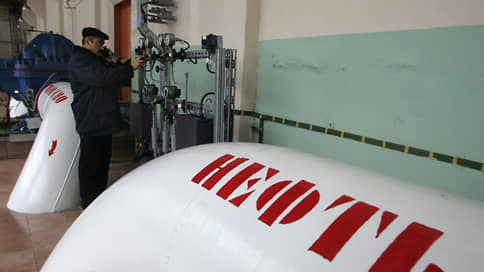Russian oil transit through Belarus will rise in price by only 10%
[ad_1]

The operator of the Belarusian section of the Druzhba oil pipeline, Gomeltransneft Druzhba, managed to quickly agree on a tariff increase with Transneft. In the southern direction, from February it will increase by 10% instead of the 14.5% requested by Minsk. Belarus and Astana will have to agree on a 43% increase in the rate on the northern branch, through which oil is pumped from Kazakhstan to Germany. Experts believe that a constant increase in tariffs will not contribute to increasing supplies in this direction.
As Kommersant has learned, Transneft has agreed for Gomeltransneft Druzhba (the operator of the Belarusian part of the Druzhba oil pipeline) to increase by 10.2% the tariff for pumping Russian oil along the Unecha-Brody route in the direction of Hungary, Slovakia and the Czech Republic in 2024 year. In the northern direction Unecha-Adamova Zastava to Germany and Poland, as follows from the letter from the Russian oil transportation company, Transneft “does not object to the use of a methodological approach to equalize the average unit tariff when transporting oil along the southern and northern branches of Druzhba.”
Transneft confirmed this information to Kommersant. “Based on the results of negotiations with Belarusian colleagues and analysis of calculations, we came to a figure for increasing the tariff on the southern branch of 10.2%,” company representative Igor Demin told Kommersant. “There is no Russian transit on the northern branch, to Adamova Zastava, so the tariffs in this area is not within our competence.”
The agreed rate is less than what Belarus asked for (see Kommersant of December 15). In mid-November, Gomeltransneft Druzhba proposed to Transneft to index tariffs for oil transportation through its territory to Europe in such a way as to eliminate the current cross-subsidization between the two pipe routes. To do this, on the northern branch, which currently carries only Kazakh oil, Belarus wanted to raise the rate by 43% (to 653.8 rubles per ton), and on the southern branch, which continues to supply oil from Russia, by 14.5% (up to 195.8 rubles per ton). The increase is scheduled for February 1, 2024. In February 2023, the rate increased by 9%.
But in the summer, the operator of the Belarusian section of the oil pipeline asked for an even more significant increase in transit prices – 1.8 times for both branches. This option did not suit Russia. Minsk explains the need for growth by a sharp decrease in pumping after the introduction of sanctions against Russia and the refusal of Germany and Poland to purchase Russian raw materials since February last year. According to Gomeltransneft Druzhba calculations, cargo turnover on transit routes fell almost five times compared to 2022, including Adamovo by 17 times. Next year, the volume of supplies from Kazakhstan to Europe via Belarus will remain at the current level. In mid-December, Astana and Moscow agreed on the possibility of transporting up to 1.2 million tons of oil via Druzhba to Germany in 2024.
At the same time, the Ministry of Energy of Kazakhstan stated that the country opposes Belarus’ proposal to increase the tariff for oil transportation through the territory of the republic by 43% and intends to negotiate with the Belarusian side. According to Astana, when pumping 1.2 million tons of oil to the Schwedt refinery, Kazakhstan’s losses could amount to about $2.64 million.
Kirill Rodionov, an expert at the Institute for the Development of Technologies in the Fuel and Energy Complex, notes that the supply of Kazakh oil along the northern branch of Druzhba will most likely remain minimal. According to the Central Dispatch Department of the Fuel and Energy Complex, in October 2023, the volume of supplies amounted to 99.8 thousand tons. For comparison, the volume of transit through the Caspian Pipeline Consortium (CPC) in October 2023 exceeded 5 million tons. Accordingly, an increase in the transit rate will only lead to the fact that supplies along the northern line of Friendship will remain insignificant for Kazakhstan – not only in terms of volume, but also in terms of cumulative costs, the analyst says.
Kommersant’s source notes that Astana allowed for an increase in pumping to Germany through Belarus to 200 thousand tons per month, but, apparently, abandoned this idea, given the constant risks associated with a likely increase in transit tariffs. However, even in this case, Druzhba will remain the most profitable route for the supply of raw materials to Europe for Kazakhstan, notes Kommersant’s interlocutor.
[ad_2]
Source link





